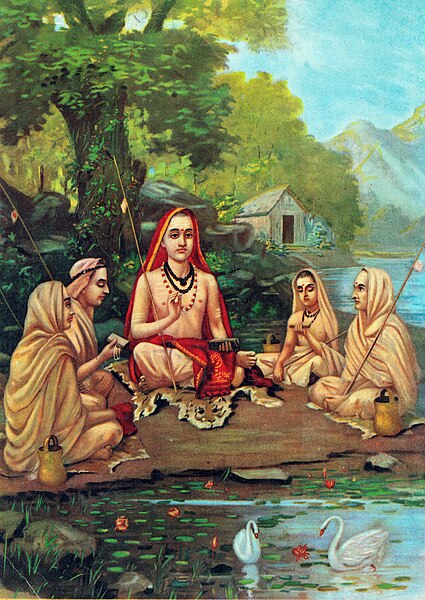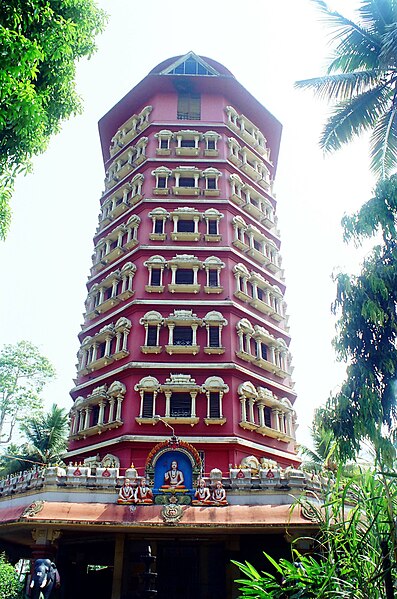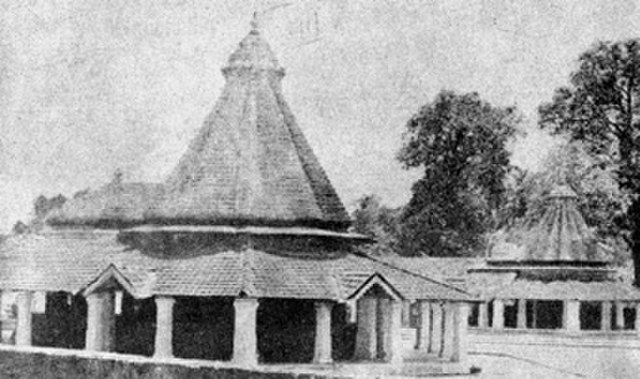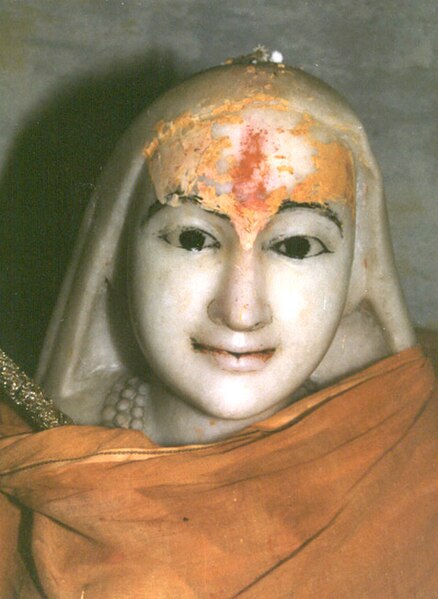The Daśanāmi Sampradaya, also known as the Order of Swamis, is a Hindu monastic tradition of "single-staff renunciation" Ēkadandis were already known during what is sometimes referred to as "Golden Age of Hinduism". According to hagiographies composed in the 14th-17th century, the Daśanāmi Sampradaya was established by Vedic scholar and teacher Adi Shankaracharya, organizing a section of the Ekadandi monks under an umbrella grouping of ten names and the four cardinal mathas of the Advaita Vedanta tradition. However, the association of the Dasanāmis with the Shankara maṭhas remained nominal.
Sannyasi, a Saiva mendicant - Tashrih al-aqvam (1825)
Dandi Sanyasi, a Hindu ascetic, in Eastern Bengal in the 1860s
(Vidyashankara temple) at Sringeri Sharada Peetham, Shringeri, Karnataka
H.H. Jagadguru Swami Nischalananda Saraswati, The Shankaracharya of Puri
Adi Shankara, also called Adi Shankaracharya, was an Indian Vedic scholar and teacher (acharya) of Advaita Vedanta. Reliable information on Shankara's actual life is scanty, and his true impact lies in his "iconic representation of Hindu religion and culture," despite the fact that most Hindus do not adhere to Advaita Vedanta. He is seen as "the one who restored the Hindu dharma against the attacks of the Buddhists and in the process helped to drive Buddhism out of India." Tradition also portrays him as the one who reconciled the various sects with the introduction of the Pañcāyatana form of worship, the simultaneous worship of five deities – Ganesha, Surya, Vishnu, Shiva and Devi, arguing that all deities were but different forms of the one Brahman, the invisible Supreme Being.
Painting of Adi Shankara, exponent of Advaita Vedanta with his disciples by Raja Ravi Varma
Adi Sankara Keerthi Sthampa Mandapam, Kalady, Kochi
The birthplace of Adi Shankara at Kalady
Murti of Shankara at his Samadhi Mandir, behind Kedarnath Temple, in Kedarnath, India








